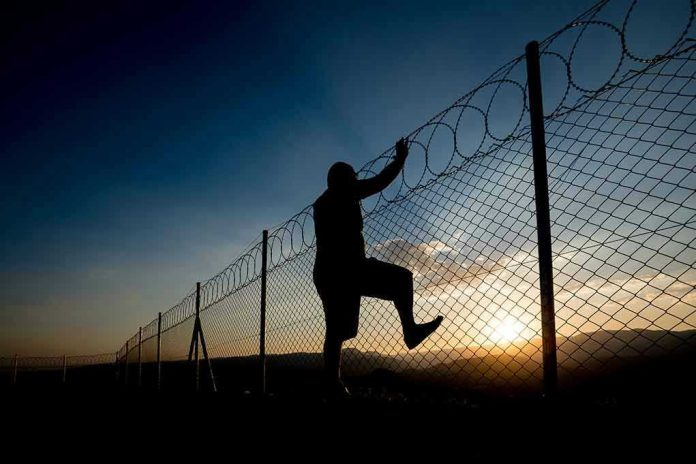
A five-month manhunt spanning multiple states finally ended when the last of ten New Orleans jail escapees was cornered in Atlanta, exposing a security failure so massive it triggered nationwide questions about our correctional system’s most basic function: keeping dangerous criminals locked up.
Story Snapshot
- Derrick Groves, final escapee from May 2025 Orleans Justice Center breakout, captured after Atlanta police standoff
- Ten-inmate escape represents one of the largest jailbreaks in recent New Orleans history
- Five-month, multi-state manhunt consumed significant law enforcement resources across the Southeast
- Incident highlights ongoing security vulnerabilities at Orleans Justice Center under federal oversight
The Great Escape That Shook New Orleans
Ten inmates walking out of the Orleans Justice Center in May 2025 wasn’t just an escape—it was a systemic breakdown that exposed fundamental flaws in one of Louisiana’s primary detention facilities. The coordinated breakout immediately triggered alarms across multiple law enforcement agencies and launched what would become one of the most extensive manhunts in recent regional history. The sheer scale of the escape suggested either gross negligence or deliberate assistance, neither of which inspires confidence in a facility already under federal oversight for previous management failures.
“The moment Derrick Groves realized it was game over 👀🚓”
“Derrick Groves thought he could run… until this happened 👀”
“That split second when Derrick Groves saw the flashing lights 😳👮♂️”
“Caught in 4K: Derrick Groves meets the cops 👀📸” pic.twitter.com/naHL3idSNr
— NOVA (@NOVAxKING) October 8, 2025
The Orleans Justice Center’s troubled history provided the perfect storm for such a catastrophic security breach. Federal oversight had been implemented due to chronic issues with inmate safety and facility management, yet somehow ten individuals managed to orchestrate their departure from what should have been a secure environment. This wasn’t a Hollywood-style tunnel dig or helicopter rescue—this was a failure of basic correctional protocols that every taxpayer has a right to expect from their justice system.
The Hunt Across State Lines
Law enforcement agencies from Louisiana to Georgia found themselves playing an expensive game of hide-and-seek with dangerous criminals who had already proven their disregard for legal boundaries. Nine of the ten escapees were recaptured over the subsequent months, each apprehension requiring coordination between local police, state authorities, and federal agencies. The manhunt stretched resources thin while communities from New Orleans to Atlanta lived with the unsettling knowledge that convicted criminals were roaming free in their neighborhoods.
Derrick Groves proved the most elusive of the group, managing to evade capture for five full months before Atlanta Police finally cornered him in a southwest Atlanta standoff on October 8, 2025. His ability to remain at large for so long raises uncomfortable questions about the initial response to the escape and the effectiveness of our multi-jurisdictional law enforcement coordination. Every day Groves remained free represented a failure of the system and a potential threat to innocent citizens.
The Real Cost of Correctional Failure
The financial burden of this five-month circus falls squarely on taxpayers who already fund these institutions with the reasonable expectation that they’ll perform their most basic function: containment. Hundreds of law enforcement officers, federal agents, and support personnel spent months tracking down individuals who should never have left their cells in the first place. The overtime costs, travel expenses, and resource allocation required for this operation could have funded significant improvements to the very security systems that failed so spectacularly.
Beyond the immediate financial impact, this incident undermines public trust in our criminal justice system at a time when confidence in institutions is already fragile. Families of victims affected by these inmates’ original crimes were forced to relive their trauma while wondering if dangerous individuals might strike again. The psychological toll on communities that harbored these fugitives cannot be measured in dollars, but it represents a real cost of institutional failure that reverberates far beyond budget spreadsheets.
Accountability and the Path Forward
The recapture of all ten escapees should not be celebrated as a victory—it should be viewed as the restoration of a status quo that never should have been disrupted. Law enforcement agencies deserve credit for their persistence and coordination, but the real question remains: how do we prevent such a massive security failure from occurring again? The Orleans Justice Center’s federal oversight was supposed to address systemic problems, yet it clearly failed to prevent this embarrassing and dangerous breach of public safety.
Real accountability means more than reviewing security protocols and promising reforms. It means identifying who was responsible for the failures that enabled this escape, implementing consequences for those individuals, and establishing systems that make such large-scale breakouts virtually impossible. American taxpayers deserve correctional facilities that prioritize public safety over bureaucratic convenience, and this incident proves that current oversight mechanisms are inadequate to ensure that standard.
Sources:
11Alive/WWL, “Last escaped New Orleans inmate Derrick Groves caught in Atlanta,”









